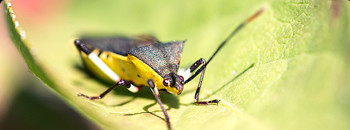You may not recognize honey bees beyond their black and gold stripes, but bees and other pollinators play a vital role in our environment and are responsible for pollinating some of our favorite foods and flowering plant species. Research points to multiple factors affecting bee health, such as pests, parasites, climate change, and nutrition problems.
Fortunately, gardeners can make conscious decisions to purchase flowers or plants that increase opportunities for bees and other pollinators to enrich our environment. With that in mind, RISE is offering tips for maintaining bee-friendly lawns and landscapes:

- Plant native flora. Growing native flowers and plants will adapt better to where you live and provide a familiar food source to local pollinators.
- Include diverse flower colors and fragrances in your garden. Bees are especially attracted to flowers in shades of purple, blue, white and yellow, while butterflies like red and purple.
- Provide water and sun. Pollinators love visiting a sunny location with a source of fresh water nearby.
- Read and follow label instructions. “Bee” responsible by always reading and following all label instructions when using any pesticide product. Make sure to choose the right product for your problem, and apply it correctly.
- Plant generously. A large amount of flowers is more attractive to pollinators than single plants.
Pollinators play an important role in a healthy environment. Promoting bee health around your lawn and garden can make a difference.

